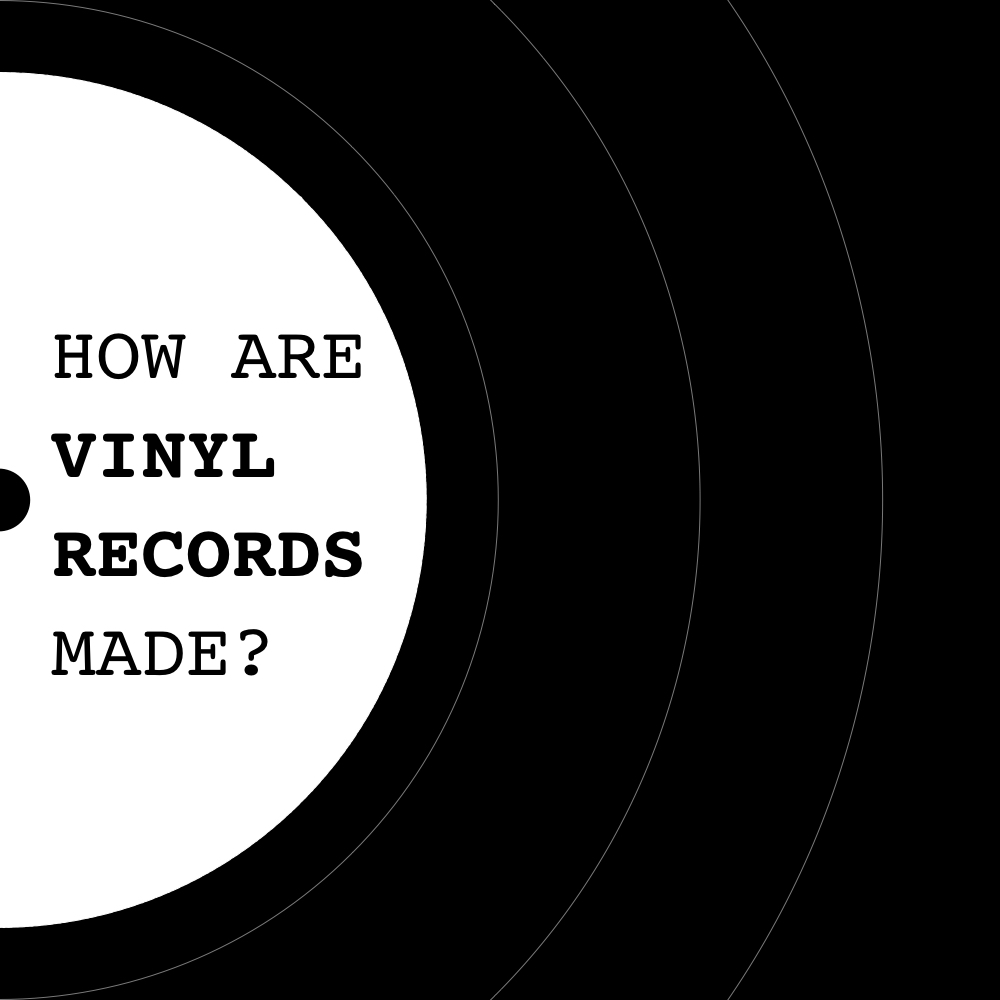This post answers the question, how do vinyl records work? We’ve covered how sound is transferred onto a record in a previous post, but here we explain how the cut grooves get translated back to your ears as sound…
Any feedback, questions or comments, get in touch through the links below or email us
Glossary (What You Need To Know)
Turntable
The circular rotating thingy that the record is placed onto; AKA the Platter.
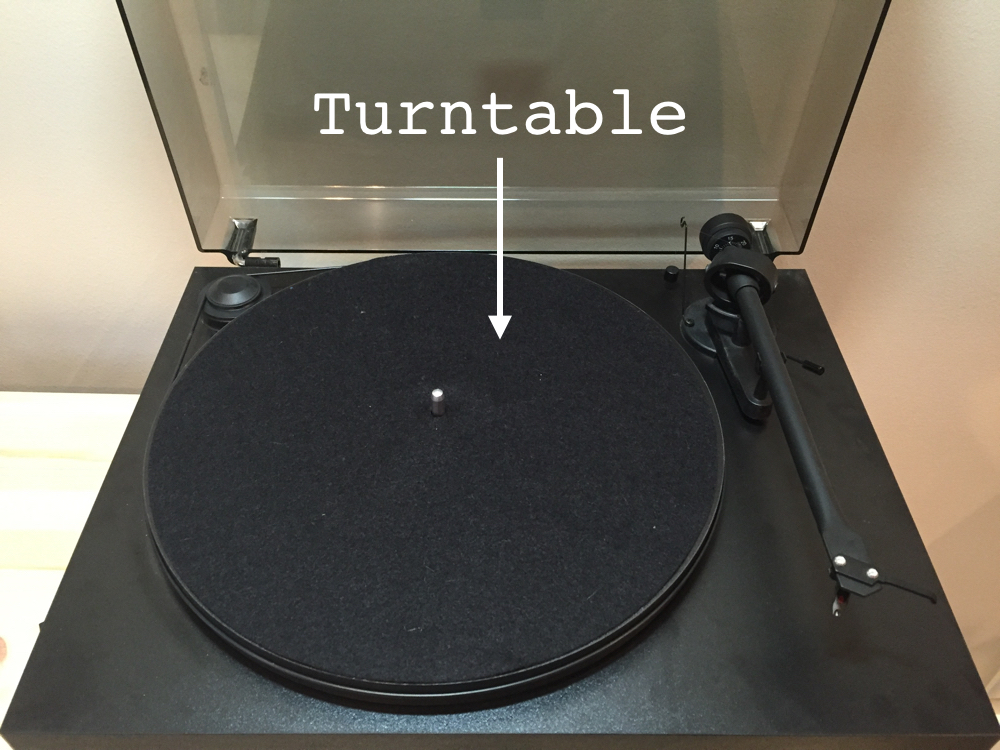
Tone Arm
The system, or lever, which holds the cartridge and stylus in place above the record.
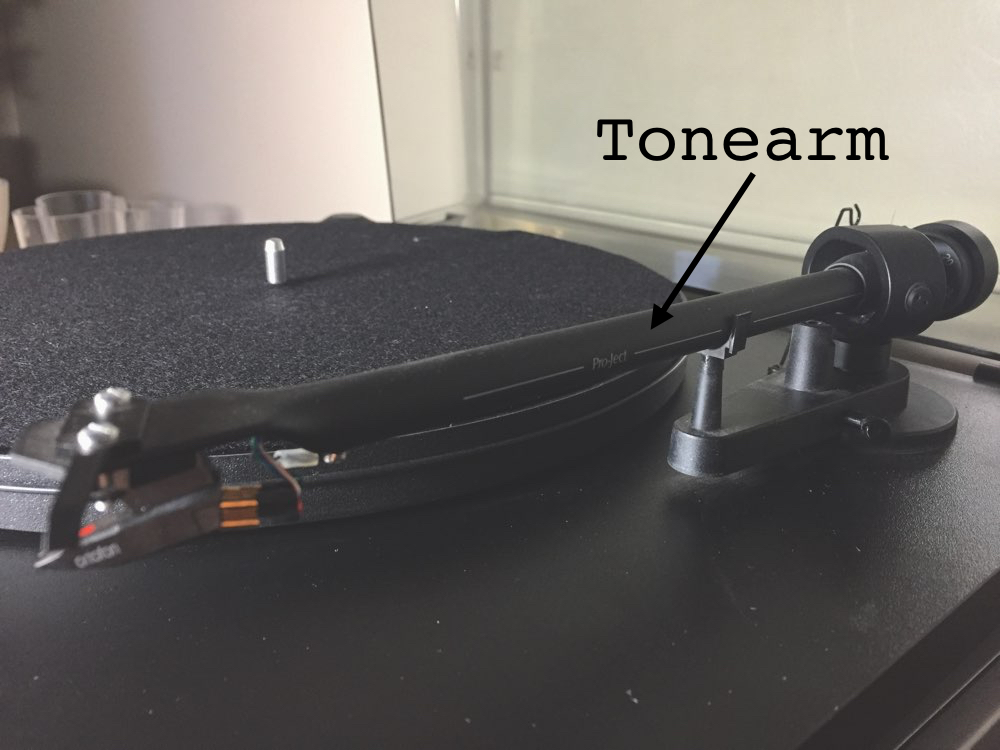
Cartridge
Essentially a magnet, wrapped in a wire coil, attached to the stylus.
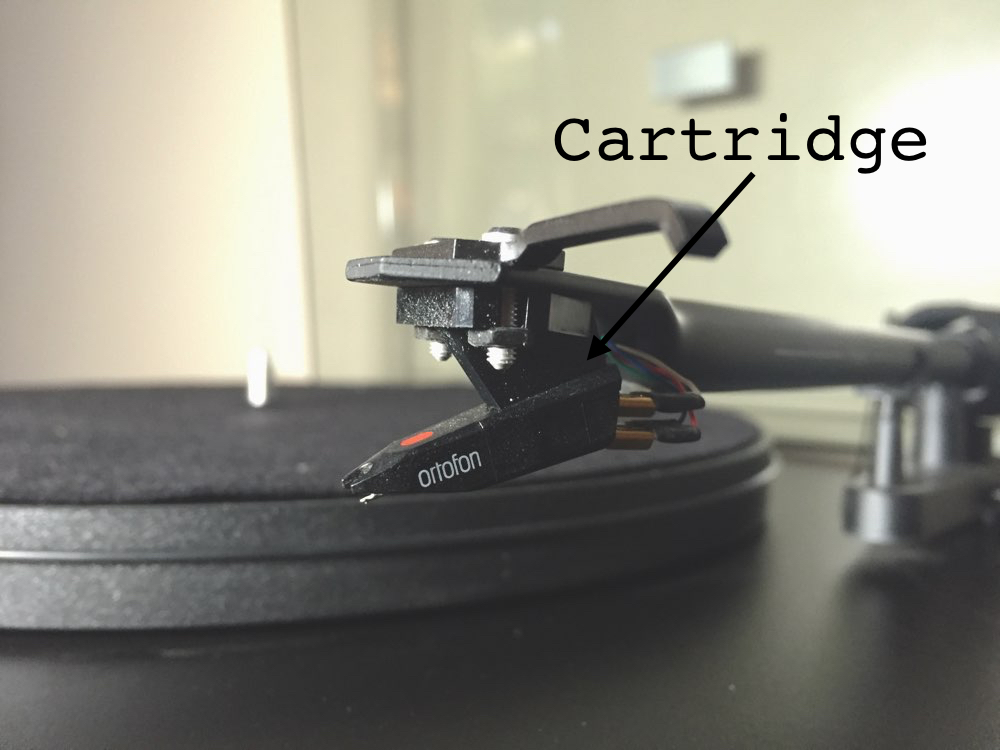
Stylus
The needle that sits in the grooves of the record; normally made from sapphire or diamond.
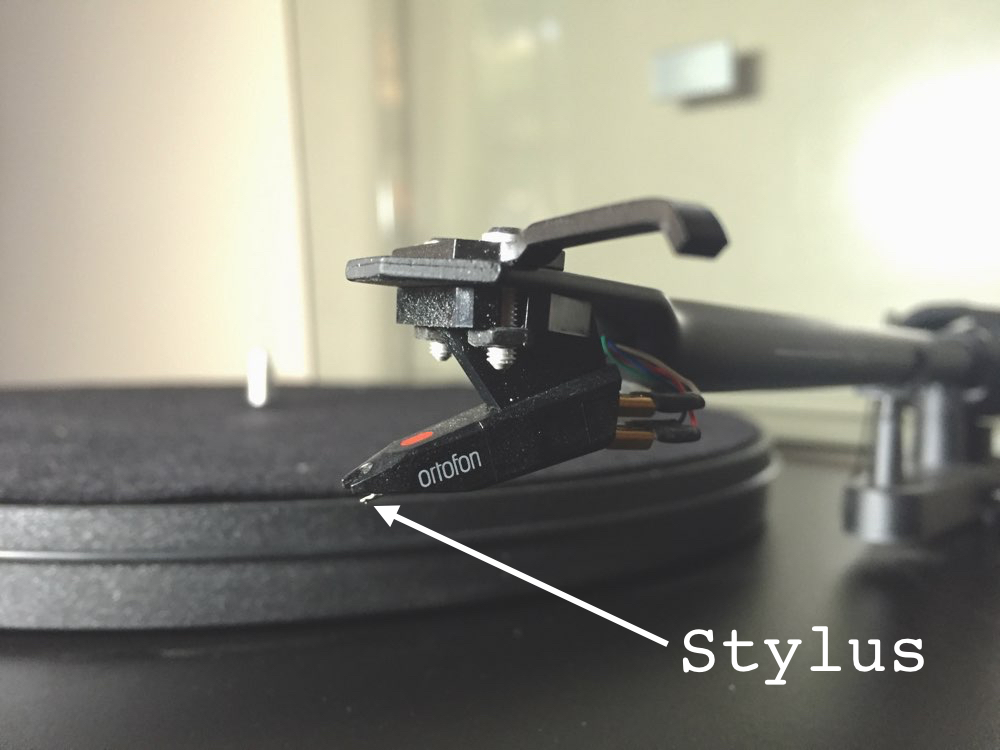
Playback
The record sits on the turntable, and is rotated at a constant speed – normally 33 ⅓ rpm for an LP, or 45 rpm for singles.
Both stylus and cartridge are lowered, by the tone arm, onto the spinning record. To preserve the groves, the stylus should be placed onto the lead in – a 6mm blank space at the outer rim of the record.
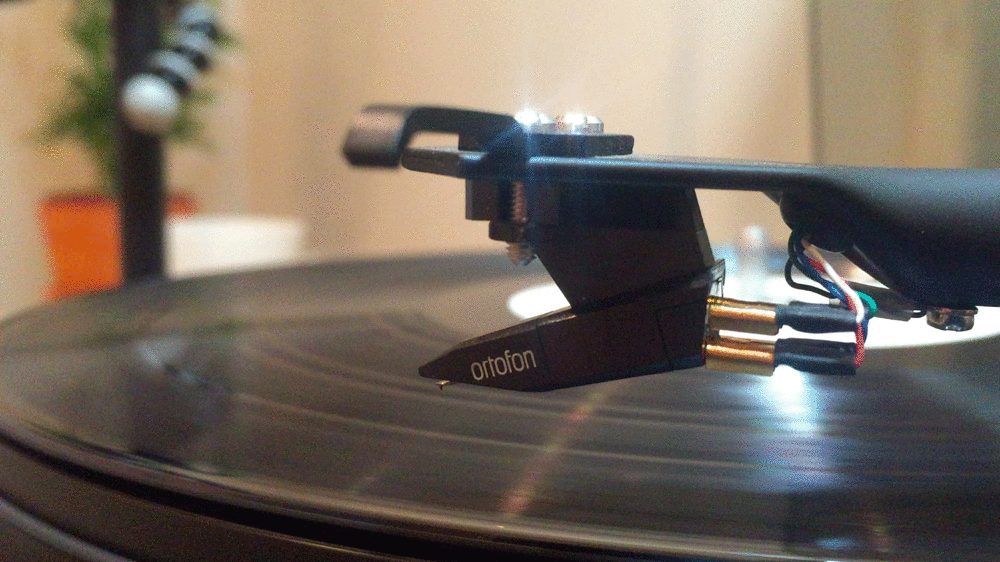
As the record turns, the stylus falls into the tiny cut grooves, causing it to vibrate.
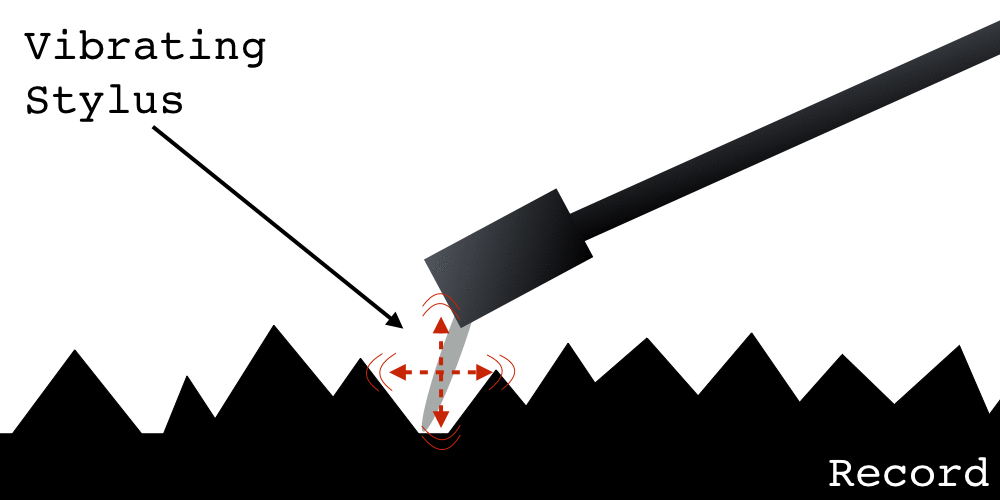
***warning*** very rough impression
As the stylus vibrates, so does the cartridge that it’s attached to. The cartridge is a transducer, this creates an electrical current that changes depending on the stylus’ vibrations.
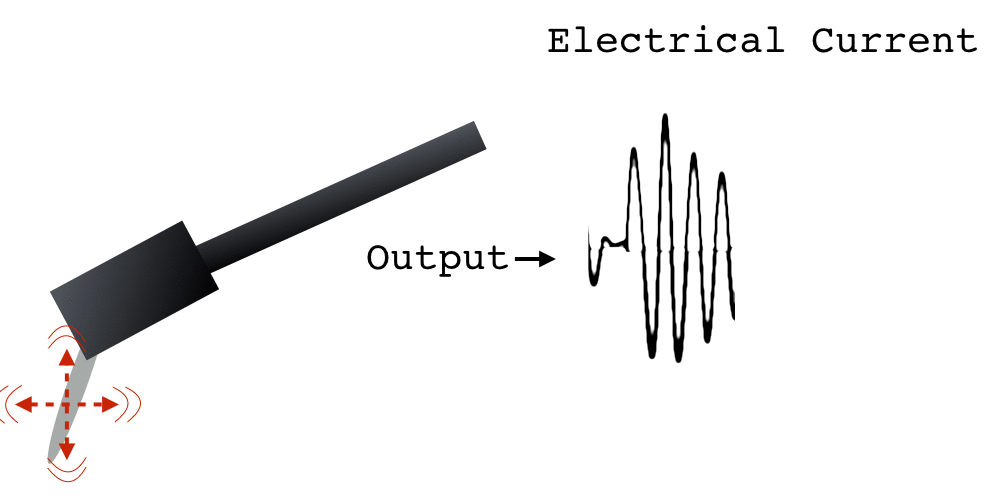
***warning*** very rough impression
This electrical wave is fed into an amplifier, amplified (i.e. made louder) and fed into the speaker(s). These speakers have a diaphragm which moves back and fourth, mimicking the stylus’ movements – recreating the sound that was originally cut into the record.
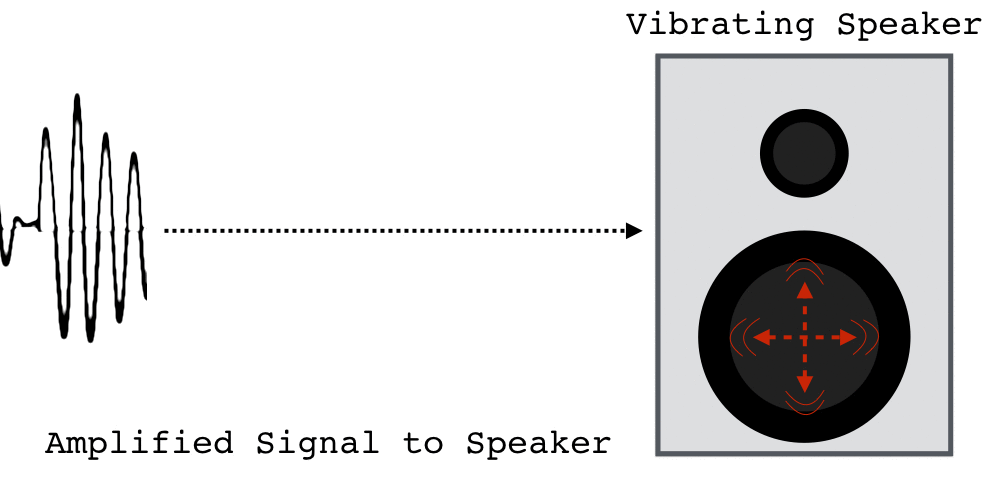
***warning*** very rough impression
Playback vs Recording
The process of playing a record is essentially the opposite of recording the original sound.
When recording a sound, the microphone (also a transducer) converts sound waves into an electrical signal:
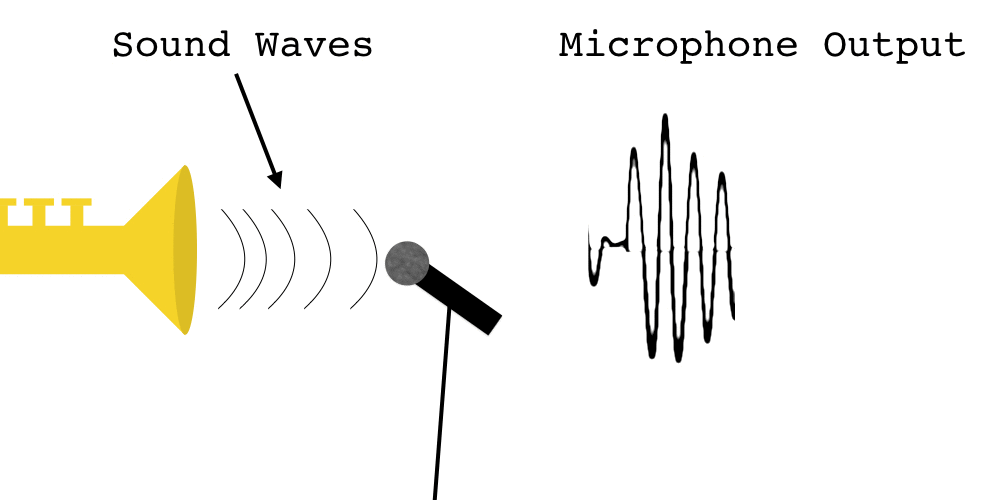
***warning*** very rough impression
It is this signal that gets cut onto the lacquer disc:
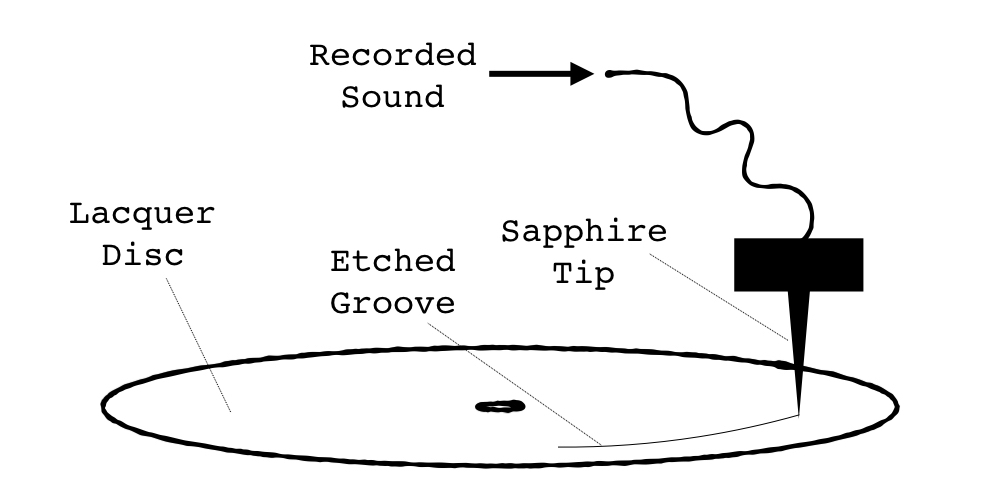
***warning*** very rough impression
Conclusion
Hopefully that has helped explain the whole process, essentially:
• Microphone converts sound waves into an electrical signal
• This signal is converted into kinetic energy (i.e. vibrations) and cut onto a record
• The record player’s stylus reads these vibrations, and the cartridge converts this back into an electrical signal
• This signal then causes the speaker’s diaphragm to vibrate – producing sound waves
The whole process is vibration > electrical signal > vibration > electrical signal > vibration…!
More Information
Here’s a few sources of information you should also check out:
• Felix The House Freak – 4 minute video describing the whole process
• eHow – Very brief, but good explanation
• Disc Makers – Bit of history thrown in
Want More?
Have a look at another post from Sounds et al –
How Are Vinyl Records Made?
